The IPCC report is a dire warning delivered with an urgency not expressed in previous reports. The key to climate politics is guaranteeing fossil fuel workers no loss in salary as sustainable energy replaces carbon-based fuel – and this would cost “a pittance” says Robert Pollin on theAnalysis.news with Paul Jay.
RANSCRIPT
Paul Jay
Hi, I’m Paul Jay, and welcome to theAnalysis news. The recent IPCC [Intergovernmental Panel on Climate Change] report is even more, I don’t know any other word, terrifying, perhaps. We need to take it seriously and we’re going to try to come to terms with what it means and what can be done now. In just a few seconds, please join us with Bob Pollin. Please don’t forget the donate button, subscribe, and sign up to the email list.
We are back on YouTube and I’ll be putting a commentary up about what happened with YouTube soon. YouTube, under the pressure of an article by Matt Taibbi, reversed two of their decisions against our videos. Kept one, moved us back from one strike to a warning. Anyway, I’ll be doing more about that soon, but more urgent than that, what are we going to do about the climate crisis? Join us in a few seconds with Bob Pollin.
In the recent IPCC climate report, climate scientists are predicting that without a dramatic transformation of the global economy, quickly transitioning away from fossil fuels to sustainable energy, we will not hit the 2030 target of remaining under 1.5° degrees of warming, nor will the economy be truly zero carbon emissions by 2050. In fact, it’s far more likely — this is me now, based on current government policy, we will see 2° of warming by 2050, and perhaps three, four, or more by the end of the century. The planet will become increasingly uninhabitable, with the population of the global South trying to find ways to head north. That is a north that over the next few decades will be even more ravaged by forest fires, food shortages, lack of drinking water, flooding, lack of electrical power, overwhelmed hospitals, disruption of global supply chains, shortages of consumer goods, and so on. In other words, a breakdown in the fabric of organized society.
From what I can glean from the science, this dystopian vision is still avoidable with a massive mobilization of global resources and planning to transform the global energy system. Of course, the U.S., China, Europe, Canada, India, Brazil, and others must lead the way and make a political commitment to such a plan, but so far that’s really nowhere in sight.
Capitalism seems unable to take the necessary action. It’s far more comfortable to sit and watch the stock market hitting record highs, reap staggering profits, live in denial of what’s coming, and to a large extent already here.
At least for a while if you’re rich enough you probably won’t feel the consequences of climate change unless you lose one of your many houses to fire or flooding. But heck, you’ll have another house somewhere to go to, or perhaps a luxury yacht.
The most recent report from IPCC pays an urgent and bleak picture of the future of humans if we don’t respond now, but there are viable measures that can be taken. So let’s talk about the report and let’s focus again on what can be done.
Now joining us to discuss the recent IPCC report and how this affects the timing of what needs to be done is Bob Pollin. He’s the co-founder and co-director of the PERI Institute in Amherst, Massachusetts. Thanks for joining us again, Bob.
Bob Pollin
Thanks for having me on Paul.
Paul Jay
We’ve had this conversation before. We knew it was urgent before. In this IPCC report an even more dire sense of urgency, if that’s possible? And how does it affect your thinking on what needs to be done?
Bob Pollin
It is a more dire report, let’s just say that. I’ve traced the sequencing of the IPCC reports over the past 15 years or so, and it actually, if you look at the 2014 assessment report, the so-called fifth assessment report, the one that just came out is the sixth, they do them every seven years. If you compare the 2007, the prior one, the fourth assessment report, and the fifth — actually in the fifth assessment report it was somewhat more sanguine. They actually reduced the urgency of the crisis. Including, suggesting that you could stabilize at 2°, which was all that was necessary, and you could get there with as little as a 36% cut in emissions.
Now in 2018, they said no, they revised it. They came out with a report that was prior to this assessment report that said we have to get to 1.5°. Now in this current August 2021 report, they’re even more emphatic that what they said in 2018 is correct. We have to stabilize at 1.5° to avoid the most severe consequences of climate change that you’ve just described. They’ve also made it clear that getting there is getting harder and harder with every passing month that we don’t take adequate action.
So that’s my assessment. The report is 3500 pages long, and I won’t pretend to have read 3500 pages. But my sense of it is, that it affirms what came out in their 2018 report, on the necessity of hitting the 1.5° stabilization target, and the increased difficulties that we face in getting there.
Paul Jay
Now, speaking to people who are not as preoccupied with climate as you, it’s one of your specialties, and then others who really follow this. I think it’s important, if I’m understanding it correctly, that all the underlying assumptions of the Paris Agreement are really blown away. The Paris targets don’t come close to what’s needed in terms of this urgency, but if I understand the language of the Biden administration, they’re mostly still talking about fulfilling the Paris Accords.
Bob Pollin
So the Paris Accords, in rhetoric, says we have to get below 2.0° as our stabilization, so you could interpret that as being a 1.5° target by 2050. The actual policies that were integrated, that all the countries agreed to do, in order to be in accordance with the Paris Agreements don’t even come close to stabilize, getting anywhere close to a climate stabilization call. That’s been documented over, and over, and over again. So the rhetoric of the Paris Agreement is in line, roughly speaking, with at least the 2014 report, the Paris Agreements were signed in 2015. The Biden administration is again, in rhetoric, committed to a 50% emissions cut for the United States by 2030, and zero, net-zero, by 2050. The program that they developed, an American jobs program. In my view, if everything in that program were enacted on the climate issues, you would be just barely within range of having a viable program.
Now, what’s happened since that Biden program was announced in March, and where we are with the debate today with the two-track proposal of the infrastructure program and then everything else?
Well, the climate part of the agenda is getting contracted quite significantly to the degree that I mean, in the stories I’ve read in the last couple of days in the press, they don’t even refer to it as a climate program. It’s infrastructure, and there’s issues around health care, around child care, and so forth. The climate part is getting neglected. It isn’t likely we will get close to even what Biden had proposed in March. That’s where the U.S. is. We can tell similar stories about China and the E.U., but if we want to get into those.
Paul Jay
Even in terms of the Biden plan, as we’ve discussed before, there’s a tremendous reliance on new carbon cleaning, sequestration, technologies that don’t exist, certainly at least at a scale that could be operative within the time frame that we have. Even nuclear, even if one wants to accept there’s such an urgency that maybe there should be serious consideration of nuclear, even if, and I know lots of people don’t want to consider that because it has obviously its own dangers. I don’t get how that even happens fast enough anyway. You don’t just turn on nuclear plants overnight. Even if you do these small models that [Bill] Gates talks about, it takes decades to get that kind of technology online, assuming what one even wants to.
I’m talking to Larry Wilkerson, former Chief of Staff to Colin Powell, he’s talking about a climate core in the military, renewing the draft because we better start getting ready for the kind of emergencies that are coming, in terms of flooding, fire, mass migration, and practically giving up on the fact that there’ll be proper policy to at least mitigate this. I don’t know if he’s too pessimistic. What do you think?
Bob Pollin
Well, interesting that he refers to the military. I mean, military budget, $750 billion a year, if you just take a slice out of that, let’s say, take 15% of the military budget and move it into the climate budget, you’re almost there, in my opinion, in terms of the level of investment that we need in existing, known, and workable technologies. The simplest one is energy efficiency. We know that you can lower emissions very cheaply by improving public transportation systems. How hard is that? And by retrofitting buildings, simple. Solar energy, according to the U.S. Department of Energy, per kilowatt of electricity right now, according to the Energy Department, is half that of coal with carbon capture. So we have technologies that can work. They have to be built up at scale, which means you need to have the investments. I just would also say, referring to the European Union, they also have beautiful rhetoric about the European Green Deal and the level of investment commitment, again, in my opinion, is about 20% of what we need in order to advance a viable program. We could get the other 80% and cutting the military can be a big part of it.
Paul Jay
Is not the military one of, if not the biggest actual emitter of carbon emissions.
Bob Pollin
Yes, it is. The U.S. military is the global largest emitter of emissions. The point being, that to finance scale-level investments in a new clean energy economy, which is — and I take that as part of the sixths assessment report. I think it’s more emphasized in that one than prior ones. That is the first project. We can talk about all kinds of new fancy things. But unless we’re willing to cut carbon emissions from burning fossil fuels and transforming into a clean energy system, then there’s nothing really else that we can do.
So we have to stop burning oil, coal, natural gas, and we use the technologies we have that work fine. That is renewable energy and efficiency.
Paul Jay
And what’s the time frame? If the government ever actually gets serious about this, when does fossil fuel have to be phased out? How much, quote, unquote transition time is there?
Bob Pollin
So I would say, less than 30 years. Certainly with coal, which is the dirtiest. Coal should be phased out within a decade, and then oil and gas phased out systematically, but we have to move on to that path. As it is, Biden, just last week, asked OPEC [Organization of the Petroleum Exporting Countries] to start producing more oil in order to prevent oil price inflation.
So instead of doing that, what we really need to do is think about nationalizing the fossil fuel industry in the United States, and then we will keep burning it for another two decades, but under control. In order so that we can phase it out rather than having this persistent pressure. Maybe over the next six months, we need more oil, but that should not give the oil companies leverage over the next 25 years to start expanding their production facilities.
Paul Jay
Which is what they’re doing?
Bob Pollin
Which is what they’re doing. They’re making the argument that on the one hand, you’re telling us our days are over. On another hand, you’re begging us to produce more.
So there is a short-term issue with respect to energy supply that we cannot get to solar, wind, and other renewables in six months. We, therefore, need to have really stringent control over the fossil fuel industry, and that really fundamentally should be done through nationalization.
Paul Jay
Well, there’s two things. One, I agree with you on nationalization, we’ve talked about it before, but given the politics of the United States, it’s hard to see it happening. So what else can be done? I mean, is it a question of declaring a national emergency? Can Biden use executive orders to achieve some of this because he’s not going to pass anything through the Senate?
Bob Pollin
So the things that have a chance — we’ll see over the next month. The things that have a chance of passing are large-scale investments in clean energy. Right now, it’s not to the number necessary, but there’s still a chance. I know people are organizing around it. The second thing is to really establish some serious regulations on burning fossil fuels and all kinds of fossil fuel-related activities. Such as, if we’re going to have 100% electric vehicles in 10 years, that’s a good start, if the electricity that goes into running the electric vehicles comes from clean energy. If it doesn’t, then it’s a waste. So, therefore, we also have to have stringent controls on the utilities. The utilities have to cut their consumption of fossil fuels by, what, five, six, 7% every year. If they don’t, then they should be subject to criminal liability. That’s the kind of thing that I think is on the edge of possible and can at least move us on to the right path.
Paul Jay
We’ve talked about this before, but I think we could go into more detail. The number one thing I cannot understand about the Biden administration and their policy is why they aren’t spending tons more money subsidizing fossil fuel workers to get out of the fossil fuel industry. Promising wages. Why should fossil fuel workers lose a penny when it’s the whole of society that’s responsible for all of this? And I know you’ve studied this problem. Let’s go into it in some depth. What have you found out in terms of what the actual costs would be to first starting with coal and then maybe into some other areas? The reason I say I don’t understand it is that it would help the Democrats in the most narrowest way politically.
Bob Pollin
Well, the cost basically are peanuts. Almost undetectable, relative to the issues at stake. I’ve looked at it on a national basis. I’ve looked at it for various States, including West Virginia, which is the most fossil fuel-dependent state in the economy, also the poorest state in the country. So if we’re looking at it over the next 30 years, to get to zero fossil fuel consumption or thereabouts, we’re looking at about, at most $2 billion per year for everything, including guaranteeing a job for everyone work in the fossil fuel industry.
Paul Jay
Two billion for all?
Bob Pollin
On average, yeah.
Paul Jay
[Jeff] Bezos could pay that out of his housing money.
Bob Pollin
I know. Now look, the coal industry, there’s 60,000 people total employed in the whole country, in the coal industry. Including 30,000 coal miners and 30,000 everything else. You could fit them into a small football stadium. Then when they walk out, give everybody a million-dollar cheque, and it wouldn’t have any impact whatsoever on anything else in the economy.
First of all, the workers in the communities all deserve this level of support, including in West Virginia, as I’ve been working in West Virginia, among other States. Secondly, even in West Virginia, a generous transition program would be less than one-tenth of 1% of the overall cost of the state GDP.
Paul Jay
Okay, 2 billion. But nationally, 2 billion for all the fossil fuel workers?
Bob Pollin
Yeah, and that is, let’s say, tell me — I’ll say what it is again. Every worker is guaranteed a job and they’re guaranteed their existing wage for three years. I mean, you could argue maybe it should be five years, but anyway. Everyone’s guaranteed their pension. No one loses their pension. Anyone who needs retraining or relocation support receives generous relocation and retraining support. I’ve written this all out. It’s been published.
Paul Jay
So what has been the response of the Democratic Party at various levels to this? The only reason it’s not a no-brainer is that there’s the report with Joe Manchin from West Virginia and that phone call he had with big donors. You get a sense of how much he listens to his big donors and runs policies past them. I guess those donors aren’t in a big rush to do this? I guess there’s still coal industry people amongst his donors? I’m speculating here. It just seems so obvious for their own narrow interest.
Bob Pollin
I did meet with Joe Manchin’s staff. We had a very constructive, I thought, discussion. It wasn’t the Senator himself, but it was his staff, based on the report that we put out, I think in March. My basic argument is a green New Deal kind of project for West Virginia would be the very best thing for the state and just in terms of job creation and new opportunities within West Virginia, because a great New Deal type project for West Virginia, I estimated, would generate about 40,000 jobs. Again, we would guarantee the job quality for the people that are getting phased out of the fossil fuel industry. That’s only about 2000 people.
So, you know, you have this massive opportunity and people in the state know that the fossil fuel industry is not the future for West Virginia. So let’s move into the future. Now, Manchin has an incredible opportunity with his existing current leverage to parlay that into way disproportionate numbers, funds, for West Virginia. So why he doesn’t do it, I don’t know, but it should be an obvious thing for him to do.
My guess is that some of his predecessors, like Senator [Robert] Byrd, who was all West Virginia all the time, he would do it because he sees this as an opportunity. It is a huge opportunity for West Virginia.
Paul Jay
I mean, is part of it just the political equation that amongst the pro-Trump vote in West Virginia now, is solidly pro-Trump state, that there is such — what’s the word? Religious extremism.
I just did a story recently on the growing role of Christian nationalism in the military. Climate denial still seems to be as big a piece of that belief system. As is anti-vaccination and other kinds of scientific denial, I guess. I mean, are these guys just so afraid of that, that they won’t take it on?
Bob Pollin
Well, I think there is something real here, and that is if you work in the coal industry in West Virginia today, you’re going to make about $100,000 on average. It’s a good job. Wasn’t always a good job, but people struggled. The Union struggled and ended it with decent jobs. The stuff that I’m writing about, I know it’s real, but they don’t know it’s real. Some professors making up these numbers to impress other lefties or whatever. So they don’t believe it and I respect the level of skepticism.
That’s exactly why, you know, I had a good discussion with Manchin’s staff, and we need to be able to persuade them that this actually is the future for West Virginia. Now we have to see some discernible evidence. We have to see investment money flowing in, and that’s where Biden’s program needs to deliver, like now. Like big dollars into West Virginia and other red states. Because this worked for red states just as much as blue states. The people in red states are going to suffer more than others, proportionally, due to these impacts of climate change.
Paul Jay
What other states have you taken a look at and what this transition would look like? What did you find?
Bob Pollin
Oh, well, we’ve discussed it before. I’ve done New York State. I’ve done Washington State. I’ve done Colorado. I’ve done Maine. I’ve done Ohio, Pennsylvania, and California, in addition to West Virginia. Obviously, there’s a lot that is distinct from one state to the next. Even similar states like Ohio and Pennsylvania. There’s a lot that is different as well, because, for example, Pennsylvania has a lot of nukes and they have fracking. Ohio doesn’t. I mean we’ve looked at those things.
However, overall, the pattern is comparable. You do a viable green investment program at a level of, say, 2% to 3% of the state GDP, investing in clean energy, investing in energy efficiency, just transition for the fossil fuel-based workers. You get a massive benefit in terms of job creation, relative to what you lose by phasing out the fossil fuel industry. Then you just have to guarantee new jobs for the fossil fuel workers, good wages, and pensions.
Paul Jay
If one tries to look into the political crystal ball, the next few years of the Biden administration, it certainly wasn’t their responsibility, what happened in Afghanistan, but he’s certainly going to wear it. I mean, I shouldn’t say it wasn’t partly their responsibility, but not primarily. And they’re going to be very distracted with that. They’re so focused on rivalry with China. The Pandemic is far from gone. Who knows what happens in 2022? They could even lose control of the Senate. Perhaps it stays more or less the way it is. Trying to be realistic about 2022 and in theory, you don’t get a climate denier elected in 2024. Maybe you get, I don’t know. It’s hard to know what you get in 2024 because certain things are unraveling for Biden that I don’t think he expected.
What is your personal take on how you’re looking at these next few years? It’s really hard to see the kind of plan you’re talking about, which I think any reasonable person could see. There needs to be a national emergency declared, and more or less the plan you’re talking about, implemented. If it takes executive orders and fights in the courts, you do it. But we’re not seeing it. So how do you see this thing unfolding?
Bob Pollin
Okay, so we are at least at the level at which rhetoric is corresponding to the IPCC. So in other words, Biden, himself the President of the United States, has committed in rhetoric, to reducing emissions by 50% as of 2030, and hit net-zero by 2050.
In Europe, the European Green Deal, the rhetoric is even more emphatic. They want to get to 55% emission reduction by 2030 and zero by 2050. So the rhetoric is great.
Now we just need to make the politicians match action with rhetoric. So at least we don’t have to argue, at least in the U.S. and Europe, and for that matter, in China. We don’t have to argue over the urgency of the issue. What we have to do is get them to recognize that you can’t keep doing this by piddling levels of policy commitments, by piddling levels of investments, by trading off other things, and by making politicians happy by pretending you’re doing something when you’re not doing it. So we just have to hold their feet to the fire.
There is a great global movement, a U.S. movement, led to a large degree by young people, but not just. The labor movement in the United States is gaining strength around this issue, if I may say. In California, 20 labor unions endorsed our study. Labor unions. Including the oil refinery workers. The oil refinery workers of California, have endorsed a Green New Deal project for California. On the obvious point, let’s move into the future. If we’re going to guarantee jobs for people, okay good. Will phase them out of fossil fuels. Even in Kern County, California, where the oil industry in the U.S. started, they’ve actually done some fairly positive things moving towards an energy transition. Not enough, but we have to embrace these positive signs of political victories, and so forth, and build on them.
Paul Jay
The idea of this just transition and the subsidization of fossil fuel workers, if it’s more or less parallelized at the national level, I don’t know that it has to be, but to some extent seems to be, can a lot of this be done at the state level?
Bob Pollin
Oh, yeah. Because certainly the just transition part, because as I said, it’s nothing. In California, I modeled it in California. It’s two-one-hundredths of 1%, of California’s GDP. So California could just issue a bond that nobody would even notice, and certainly at current interest rates at 2%. It wouldn’t even make a dent on California’s budget. That’s the kind of thing that I hope, in California, this is getting through. Maybe once we succeed in California, through the efforts of really great labor organizers in the state, it will serve as a model for the rest of the country.
Paul Jay
Yeah, I think you’re right. I think a lot of this is going to depend on the strength of Union organizing. Not just Union organizing, but organizing amongst workers who are fossil fuel workers. They should be involved, themselves, in fighting for this kind of program.
Bob Pollin
Right. And they are in California. I was on several panels with the leaders of the oil refinery workers, in California. They’re great. They’re inspiring. You should have them on.
Paul Jay
Yeah. Well, send me their contacts and I will.
Bob Pollin
I will.
Paul Jay
Just to conclude, let’s pick up on something you mentioned early on. How serious is China about all of this? Because everything Biden does now is positioned within the rivalry with China. We talked about this in the election campaign program of Biden. His climate policy was positioned in rivalry with China. Maybe that wouldn’t be a bad competition, that the two of them compete on who’s going to do better on climate? That’d be a nice competition to see. But how serious is China? Coal use is growing. On the other hand, they’re claiming they’re using it only as a transition.
Bob Pollin
So, the Presidency program is not consistent with the IPCC. They say they’re going to keep emissions increasing till 2030. They will get to net-zero not by 2050, but by 2060. Now, if they stick with that program, then it doesn’t really matter what any other countries do. If we won’t hit the IPCC targets. We will not achieve what the IPCC as of last week said we have to do. So China has to get more aggressive in terms of what happens within its own country.
China, on the other hand, has been by far the most successful in developing solar energy, such that the cost of solar has come down 80% within a decade, due to China. Almost entirely due to China’s technology and industrial policy.
China has had a history of not going too heavy on the rhetoric and going better in terms of their outcomes than what their rhetoric has suggested. So I think we also have to make sure that China recognizes that they have a responsibility, a global responsibility. Yes, let’s let China and Biden compete over — and the E.U. Right now emissions from China are 30% of all global emissions. So China is the biggest player in this whole story.
Paul Jay
The Chinese argument is they can’t get off coal fast enough. They can’t replace it with sustainable energy other than the targets they’re saying. Is that correct from just an objective point of view, or is it really just about how much they’re willing to throw at it?
Bob Pollin
It’s how much they’re willing to throw at it. Yes, if China’s going to continue to grow fast seven, eight, 9% a year, then yeah, they’re going to consume more energy. But China has this opportunity, having developed solar, far better than any other place. To start using it to a greater extent. Now, yes, that would entail investing in building out their solar capacity faster than they’re doing it. They could do it. Again, the technology — yes, we should improve the technology, but the technology is there. Maybe not to get up to 100% solar, but certainly to get to 60-70% solar. We could get there tomorrow if the money were there to build out the capacity.
Paul Jay
Alright, thanks very much, Bob.
Bob Pollin
All right, great talking to you.
Paul Jay
Thank you for joining us on theAnalysis.news. Please don’t forget the donate button, and subscribe button. Get on the email list and see you again soon.
Podcast: Play in new window | Download | Embed
Subscribe Apple Podcasts | Spotify | Android | iHeartRadio | Blubrry | TuneIn | Deezer | RSS
Never miss another story
Subscribe to theAnalysis.news – Newsletter

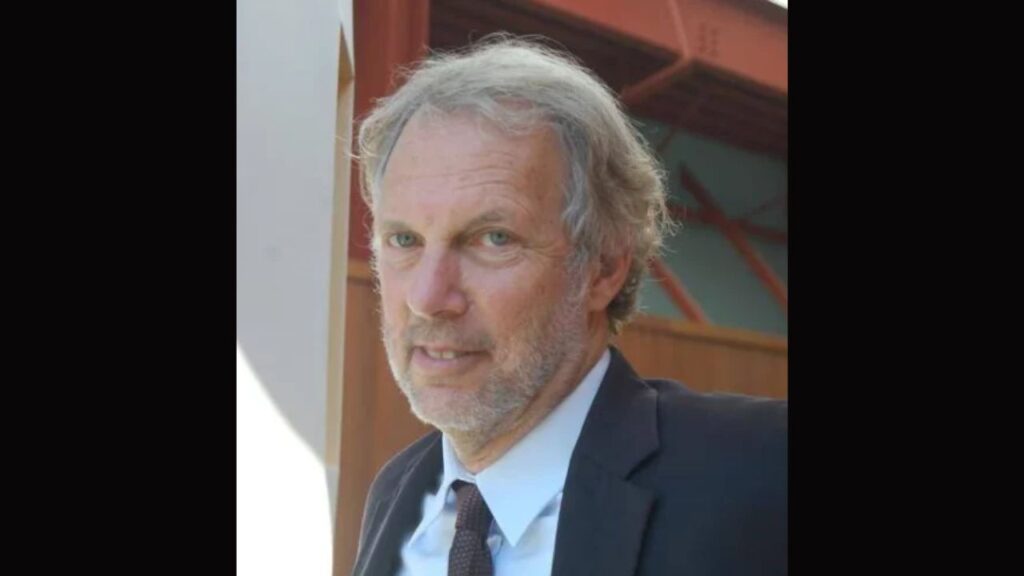




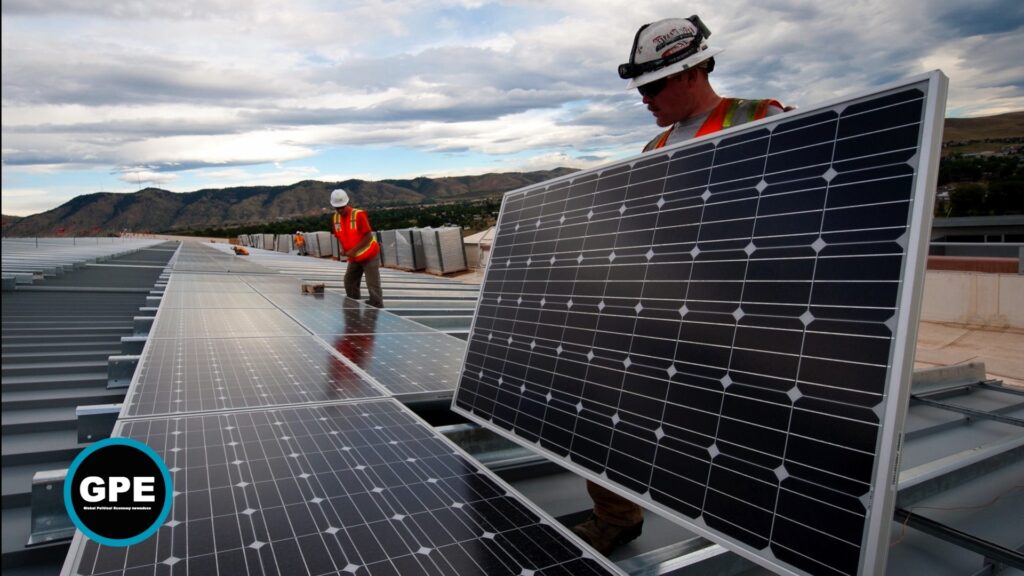
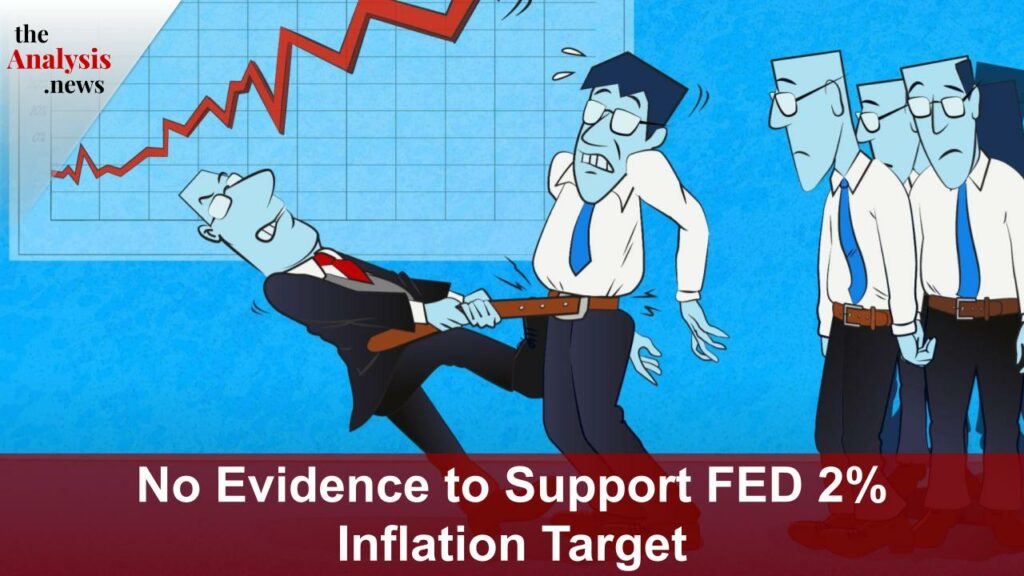
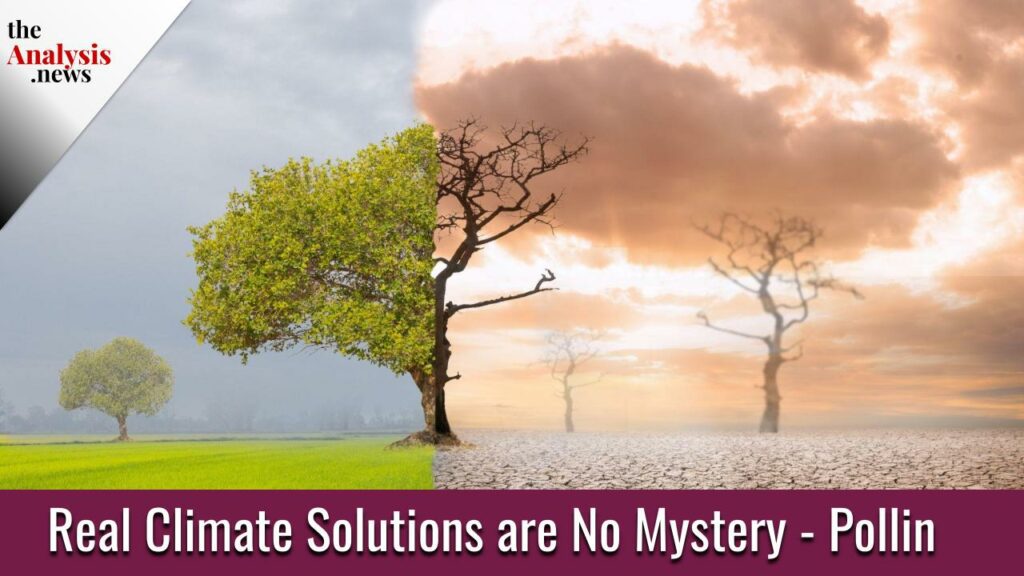
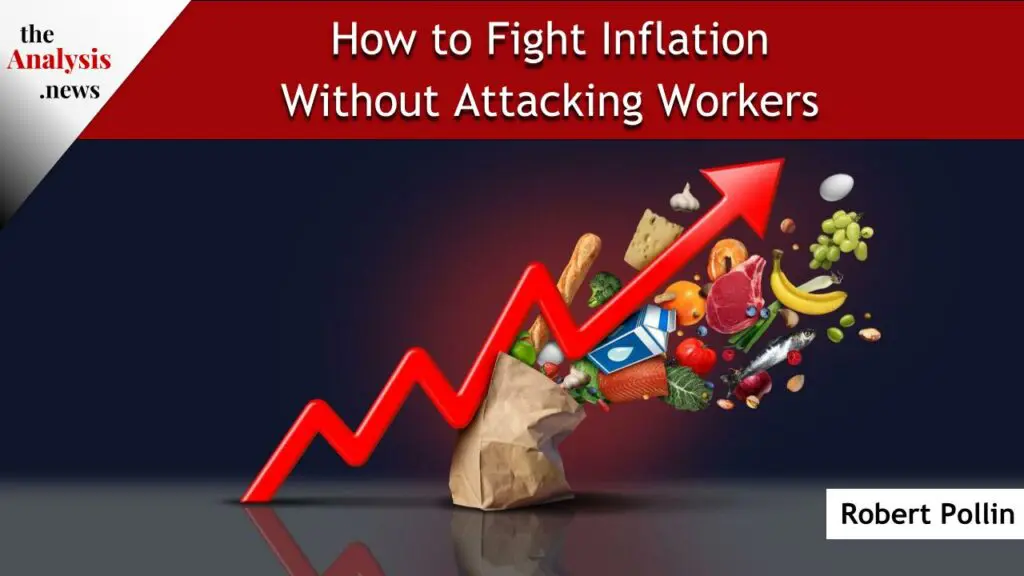
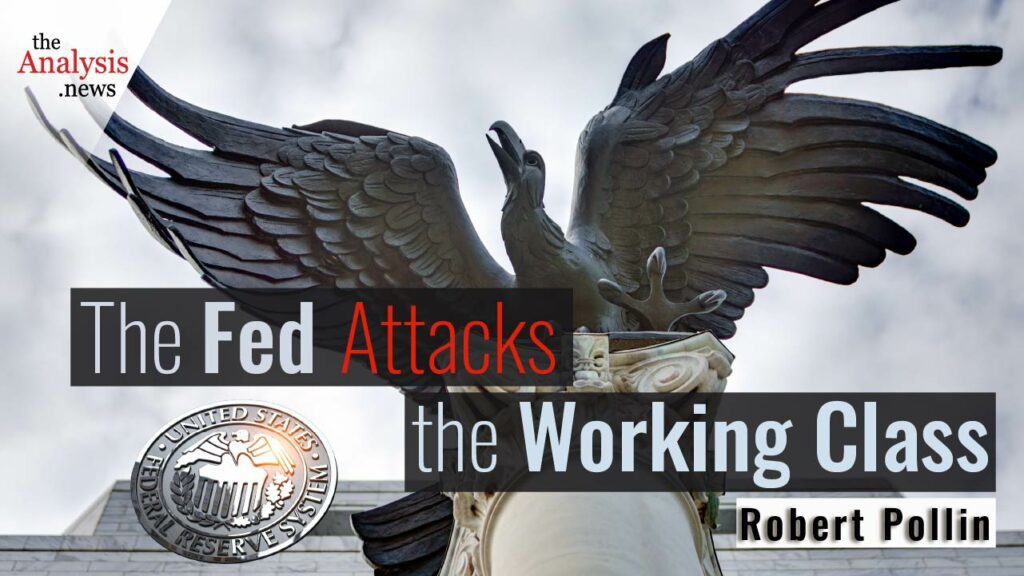
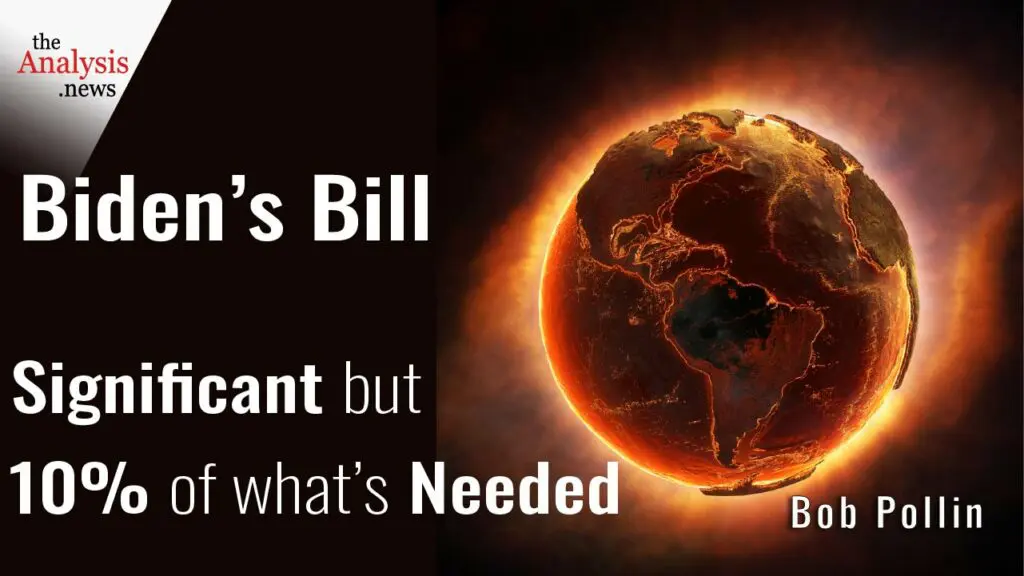
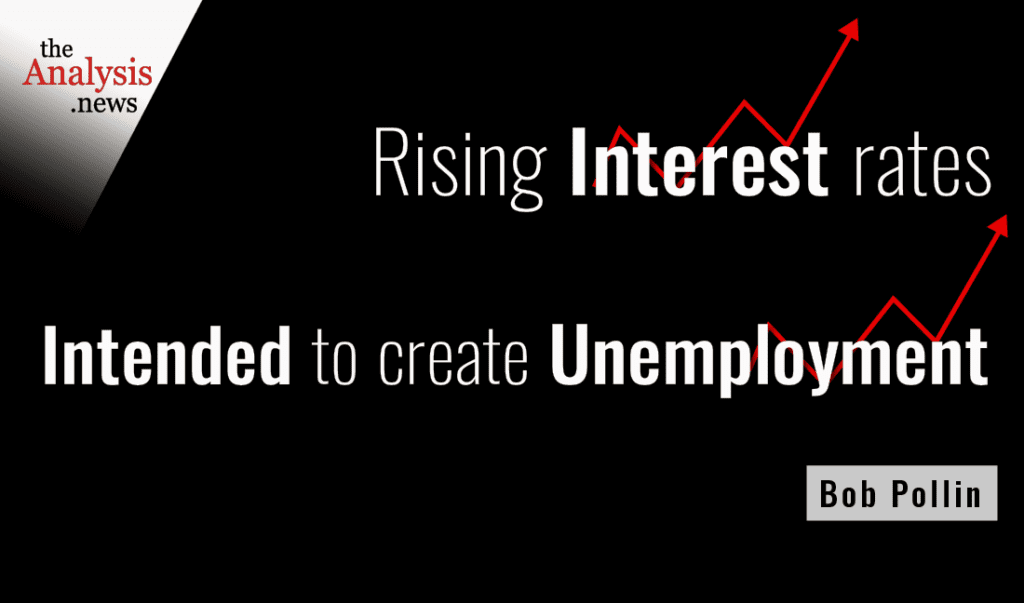
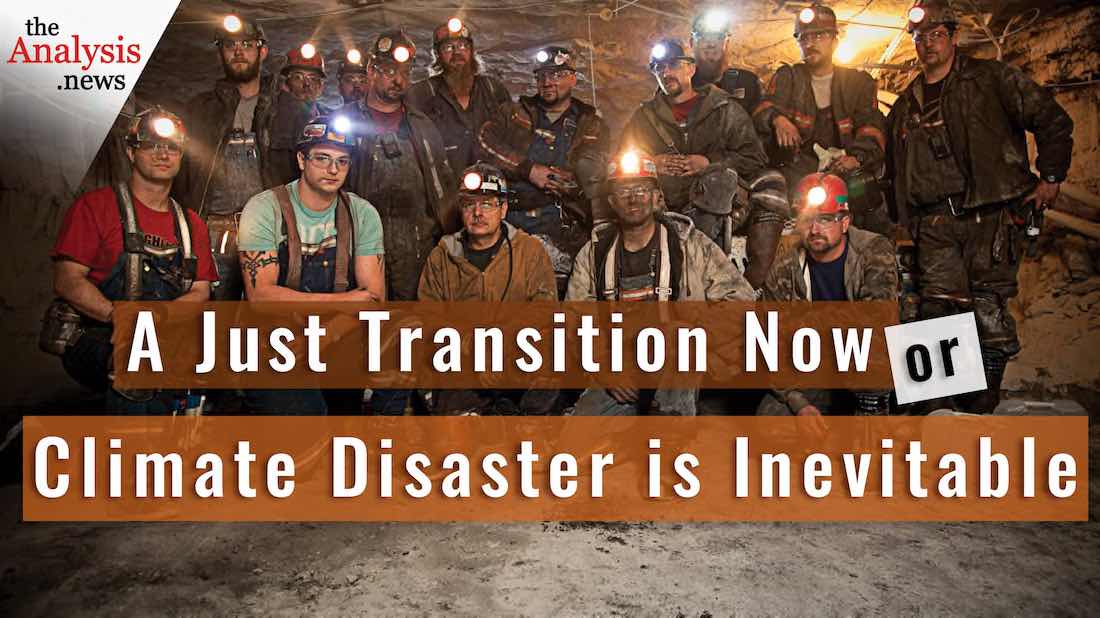

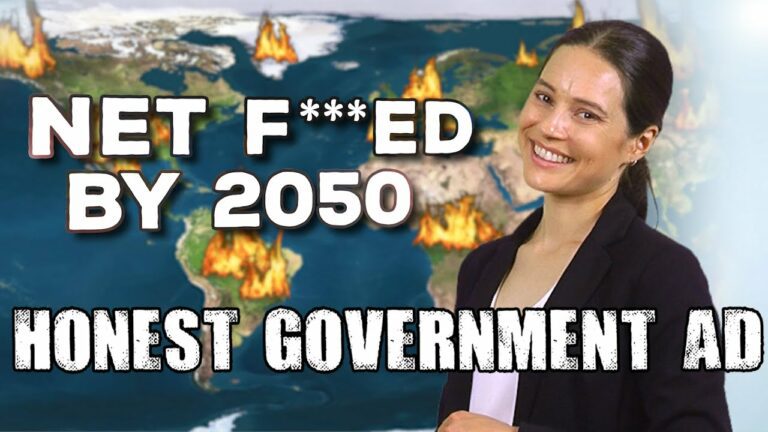
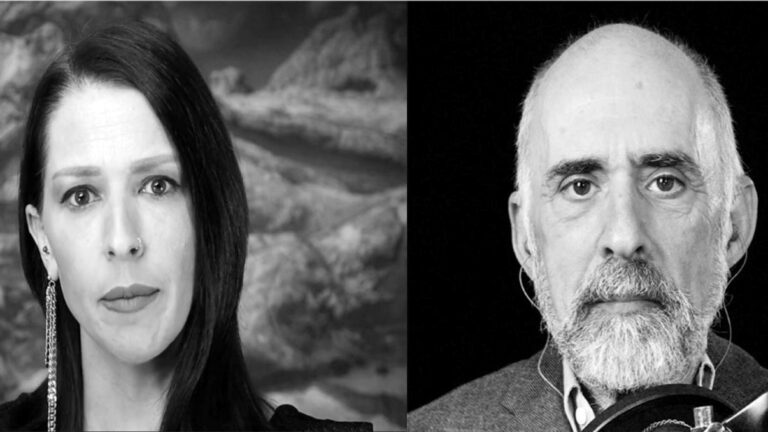
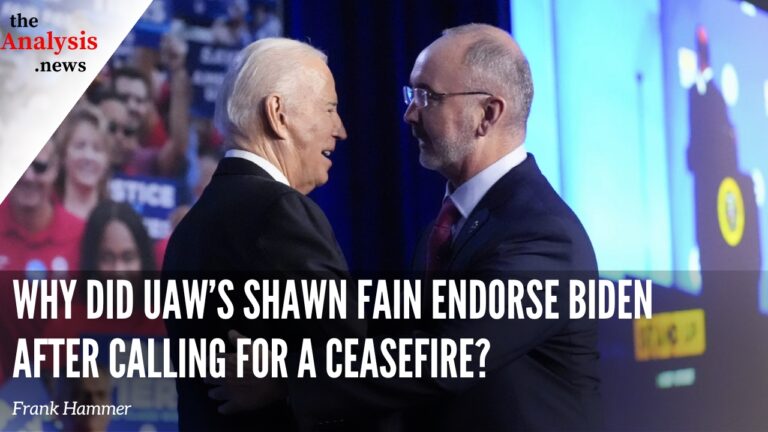

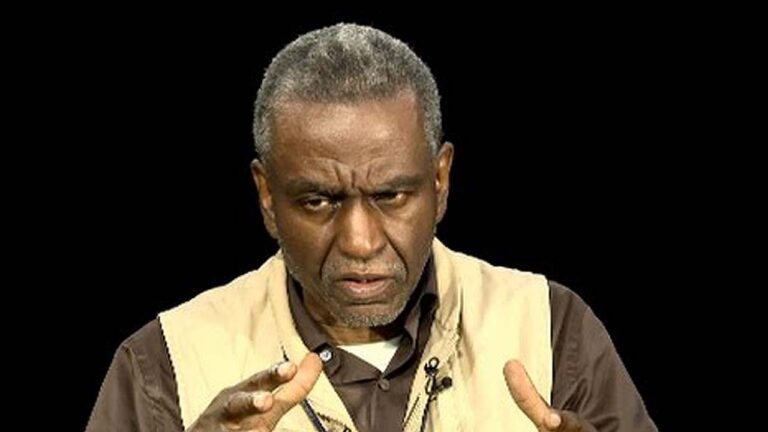
… geez, yer submit button really killed the sentence spacing -sry.
To share a possible interpretation in a short manner – many folks will have nothing to do with climate/energy anything if it appears to be tied to any other “lefty” agenda items. Perhaps relatedly, ask a “lefty” if they are willing to separate international climate justice from domestic goals to create a larger tent?
I personally feel that solid arguments exist for even total climate-deniers to move away from non-renewable energies.
Years ago Hermann Scheer wrote a book called “The Solar Economy” where he describes efforts in Germany. He is no longer with us, but he was interviewed some years ago on Democracy Now! Considering a contrast with the U.S. regulatory/legal/commercial landscape seems kind of obvious after reading the book.
In Wisconsin our power companies are protected monopolies whose profits are controlled by the state. unsupported suspicion on my part is that any attempt to limit their “turnover” is likely to have a direct impact on state pensions who are major investors.
Local power companies actively press for policy/pricing that directly discourage alternative energy, while simultaneously shifting costs from (larger?) commercial customers, to residential. They managed to do a thing with “fixed fees” that seems to target smaller/apartment customers more than larger/single family homes.
Wisconsin places a $100 surcharge on electric/hybrid vehicles as they don’t use as much gas, and don’t pay the fuel taxes that their less fuel efficient counterparts do.
These policies, and others like them seem to be generated by national groups for adoption in other states as well.
A problem with renewable energies seems to be that we don’t know how to let people not pay for free energy?
A contradiction might be -does one increase fuel taxation to pay for renewable adoption, or does one eliminate fuel taxes to get governments away from fuel tax dependencies?
Thomas Content is a former energy writer, and current Executive Director for the Wisconsin Citizen’s Utility Board:
https://cubwi.org/about-us/our-team/tom-content/
I strongly suspect he would be an interesting person to discuss some of the stupid, counter-productive day-to-day policies in this state, and others.
… and kudos to Bob Pollin – for maintaining a commitment to “just transitions” for folks in both fossil fuels, and healthcare administration. My immediate “just transition” reaction involves a long walk off a short pier. Thank you for helping me to consider being more considerate.
When will my comment be published.
It has been 4 days for moderation.
The state of Wyoming has only 600,000 residents is heavily dependent on fossil fuels for jobs and for state revenues. Where is the money to come from to retrain these workers, and what kind of jobs will replace these? I do not see that you can magically produce jobs in a state with little industry outside of coal, oil and gas. Your heart is in the right place, but I question how easy it will be to retrain the work force, and develop the businesses needed to pay wages for displaced workers.
Correction to the above. NASA Earth Scientist
Why are there no citations of the actual report? Why are we focused on former reports? Why are we looking to Manchin for advice and direction?
As an intelligent counter to this rather meek assessment of the current dilemma, I would suggest the following two sites:
1. Patrick Hogan, NSA Earth Scientist talking with Peter Wadhams, one of the foremost experts on the Arctic: Title: Arctic Apocalypse. https://www.youtube.com/watch?v=1PJon1u3U5M&t=6s
2.The Anthropocene: Where on Earth are we Going? https://www.youtube.com/watch?v=HvD0TgE34HA. This is a serious discussion of the hallmarks of the recent geological epoch.
I am not sure what is happening here, Paul. But I sense a rapid move towards rather modest DNC positions. You are aware, of course, that we are in the midst of the sixth great extinction. You should be aware that infinite growth is simply a non-starter, that Polin predicates is position on protection of GDP.
If you actually read the latest report, you will quickly see that there is very little time left, VERY little.
Military Carbon Emissions are not reported, and guess who owns the government of the USA?
We’re doomed, I’d try harder to convince the Canadian Government to do something about making schools safe for children, improve the air quality so they don’t become COVID breathing grounds, but the rot is so deep I can’t find the will to challenge it.
The IPCC has and still is far far behind reality. When we run out of water how do we grow food. When the forests continue to burn what do we do without healthy air. How do we calculate the CO2 emissions from the fires. How do we stop the methane release from the Arctic as the tundra melts and the oceans warm etc. etc.. This report however dire is continuation of the past reports. It is too little and too late. And it will still be ignored.